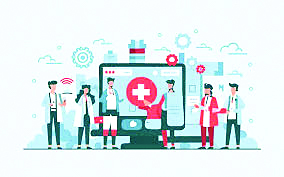
Every year, millions of people around the world face medical emergencies. Cardiovascular diseases (CVDs), including ischemic heart disease and stroke, are the leading cause of death in India, claiming an estimated 17.7 million lives. These statistics highlight the critical role of emergency medical services (EMS) in the fight to save lives. Thankfully, the landscape of pre-hospital care is undergoing changes by leaps and bounds, driven by the relentless pace of technological innovation.
Utilizing the Golden Hour in Medical Emergencies: The Need for Speed
In pre-hospital care, time is the most precious commodity. Studies show that for every minute treatment for a cardiac arrest is delayed, the chance of survival decreases by 7-10%. This concept, known as the “golden hour,” underscores the importance of rapid intervention. Today, emerging technologies are not only changing how we respond to emergencies but also dramatically improving patient outcomes by helping us achieve this critical goal faster through geographical factors like strategic deployment of ambulances and technological innovations such as building faster operative systems on unified workflow platforms.
The dawn of 5G Smart Ambulances: To make every second count
The advent of 5G mobile networks offers a game-changer in emergency response. With its ultra-fast data speeds and low latency, 5G allows for real-time transmission of vital signs, medical images like X-rays or EKGs, and other important patient data directly to hospitals. This empowers emergency room teams to prepare for incoming patients by anticipating their needs. Additionally, 5G facilitates real-time consultations with specialists who might not be readily available in the ambulance. This allows for informed decisions on treatment protocols even before the patient reaches the hospital, significantly improving the chances of successful interventions.
Integration with wearable Health Devices: Wearing Safety on Your Sleeve
The rise of wearable health devices like smartwatches and fitness trackers opens doors for preventative and proactive emergency care. These devices can monitor vital signs like heart rate, blood oxygen levels, and even detect falls. Imagine a scenario where a smartwatch detects a sudden drop in heart rate and automatically transmits an emergency alert along with the wearer’s location and medical history. This allows for a faster, more informed response, potentially preventing a medical emergency from escalating, especially in remote areas of India where access to immediate medical care might be limited.
Innovations in Telemedicine: Always keeping Hospital Care within a mile
Telemedicine platforms are transforming emergency response by enabling real-time consultations between paramedics and remote specialist physicians. In critical situations where immediate decisions are paramount, paramedics can connect with specialists for guidance on treatment protocols, medication administration, and even complex procedures. This collaboration ensures the highest quality care is delivered even before the patient reaches the hospital, particularly in regions of India facing a shortage of medical specialists. Telemedicine can also play a crucial role in educating and empowering paramedics, ultimately leading to better patient outcomes.
Challenges in pre-hospital care and the Road Ahead
While the potential of technology in pre-hospital care is undeniable, challenges remain. Cost considerations and the need for robust infrastructure development for 5G networks are major hiccups, especially in rural areas of India. Efforts are underway to bridge the digital divide and ensure equitable access to these advancements. Additionally, ensuring data privacy and cybersecurity in a hyper-connected environment is paramount. Robust security protocols and data encryption are essential to safeguard sensitive patient information.
The future of pre-hospital care is undeniably intertwined with technology. By embracing these advancements, overcoming the challenges, and ensuring equitable access, we can create a more efficient, effective, and ultimately life-saving emergency response system for all.
The author is the Co-Founder and CEO, Medulance.















